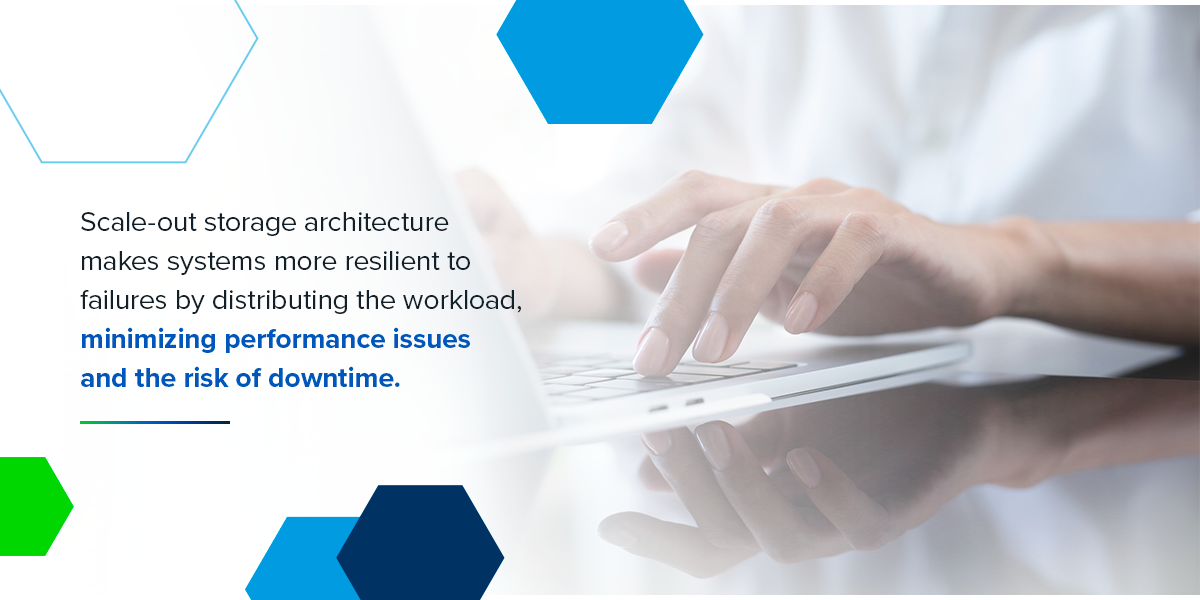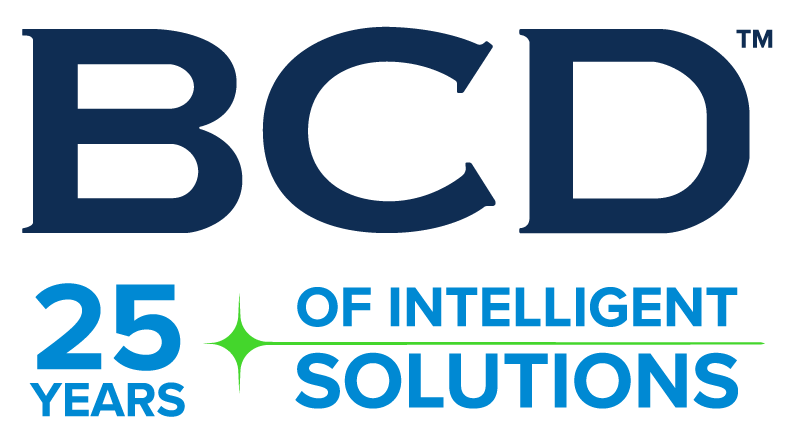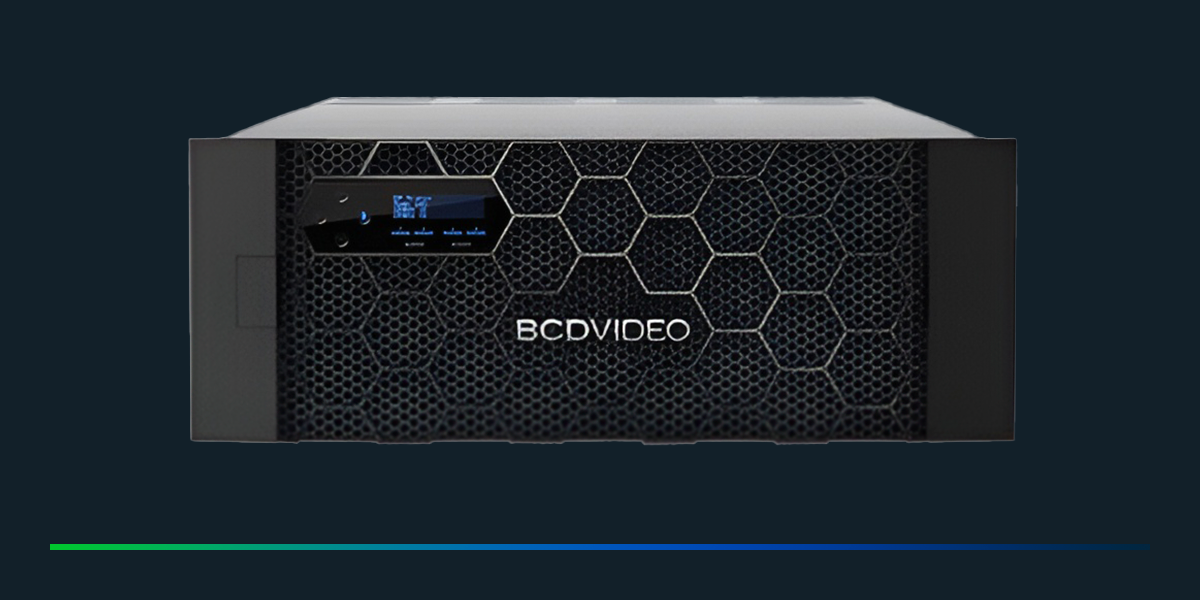Data improves decision-making and enhances business operations by providing valuable insights. Today, organizations use more data than ever, with 64% of average enterprises handling at least one petabyte of data and 41% managing about 500 petabytes.
Traditionally, companies had to buy excessive storage to avoid running out of space, but that is no longer true. Scaling storage lets you keep pace with your company’s growing needs.
This guide explains how scale-out storage works, its benefits for companies of all sizes and how it compares to the conventional alternative — scale-up storage.
Scale-Out Storage Explained
Scale-out storage, or horizontal scaling, is a network-attached storage architecture that supports heavy workloads. You can expand your capacity, RAM, throughput and processing power by adding more nodes or servers to the cluster. This straightforward scalability allows organizations to start small and gradually increase their array as needed without a complete overhaul or replacement.
Scale-out storage systems offer continuous data access. The rest of the system will continue working if a single node goes down, and you can rebalance and redistribute data across the remaining servers in the array. Horizontal storage is most suitable for unstructured data applications but can also work with structured data.
Scale-Out vs. Scale-Up Storage
Scale-up or vertical scaling is the traditional approach to increasing data storage, relying on a central pair of controllers to manage multiple shelves of drives. It uses a linear approach to provide limited scalability.
Scale-up systems often encounter bottlenecks because they require companies to introduce new systems or drivers to handle additional data, resulting in more complexity and isolated storage silos. Scale-out storage can eliminate these limitations.
Here are the primary differences between scale-up and scale-out storage.
- Flexibility: Scale-up storage is a shorter-term solution because there is a limit to the number of components you can add to the architecture. With scale-out storage, there is no cap on how many nodes and clusters your system can have.
- Costs: The costs of scale-out storage are more predictable and manageable because it follows an incremental model, where you only pay for the resources you use. Scale-up architecture has lower operational, networking hardware and licensing expenses, but costs rise when using larger servers and heavy computing resources.
- Performance: Scale-up storage solutions are more susceptible to bottlenecks because it’s challenging to increase and maintain a performance balance for all components. Scale-out storage architecture can adapt to changes in demand and workloads by adding or removing resources to maintain peak computing performance.
The Benefits of Scale-Out Storage
Organizations increasingly choose scale-out storage solutions because of their numerous advantages.
Scalability

The most desirable feature of a scale-out storage system is its ability to add an unlimited number of nodes and clusters. Besides, the systems have no limit to the amount of data processed — from a few terabytes to several petabytes. Horizontal scaling allows organizations to build architecture for expected, long-term data growth.
Even with the additional nodes and data, the system balances the workload and improves the performance of the scale-out storage architecture without network bottlenecks. You can also scale down the system by reducing the number of nodes and clusters to free up computer resources to handle other applications.
Minimal Downtime
Horizontal scaling is more effective than vertical scaling. Scale-out systems reduce downtime because you don’t need to switch off other systems to add more nodes or clusters. Besides, depreciating technology does not limit horizontal scaling, leading to faster response times and application performance.
There is no need to add hardware or make significant changes to existing infrastructure, saving time and ensuring scale-out storage runs more smoothly. Scale-out storage architecture makes systems more resilient to failures by distributing the workload, minimizing performance issues and the risk of downtime.
Easy Configuration and Management
NAS scale-out systems are easy to configure with an online interface. They maximize existing hardware’s efficiency without requiring specialized equipment. Managing them is even more straightforward because you can configure them for automatic backups, ensuring the systems continue running seamlessly without service interruptions.
Typically, managing scale-out storage architecture involves:
- Distribute workloads evenly using load-balancing techniques to minimize latency.
- Boost performance and reduce network traffic using caching and content delivery networks.
- Monitor the network for performance issues to avoid slow response times and unplanned downtime.
Cost Savings
The initial setup of scale-out storage can be pricey because the larger servers drive higher cooling and power costs. However, the storage architecture is affordable in the long term. It doesn’t require buying new hardware when upgrading your system or paying for unused space.
Horizontal storage’s improved performance and capacity justify the upfront costs. Additionally, energy-efficient equipment and cooling can easily reduce operational expenses.
Improve Your Capacity and Performance With BCD480-NAS Scale-Out Storage
Are you looking for an adaptable and efficient scale-out storage solution? BCD, a leading global security provider of hardware and software surveillance equipment, offers the BCD480-NAS scale-out storage. This product is ideal for high-density storage, using an innovative modular architecture to store, protect and manage large data quantities.
It stores up to 1.28PB per node on a 4U chassis comprising a maximum of four nodes and scales over 60PB on each cluster. You can install and configure the system in under 10 minutes without compromising the security and data protection features. Connect with a BCD representative today for more information about the BCD480-NAS and our other high-quality products.


